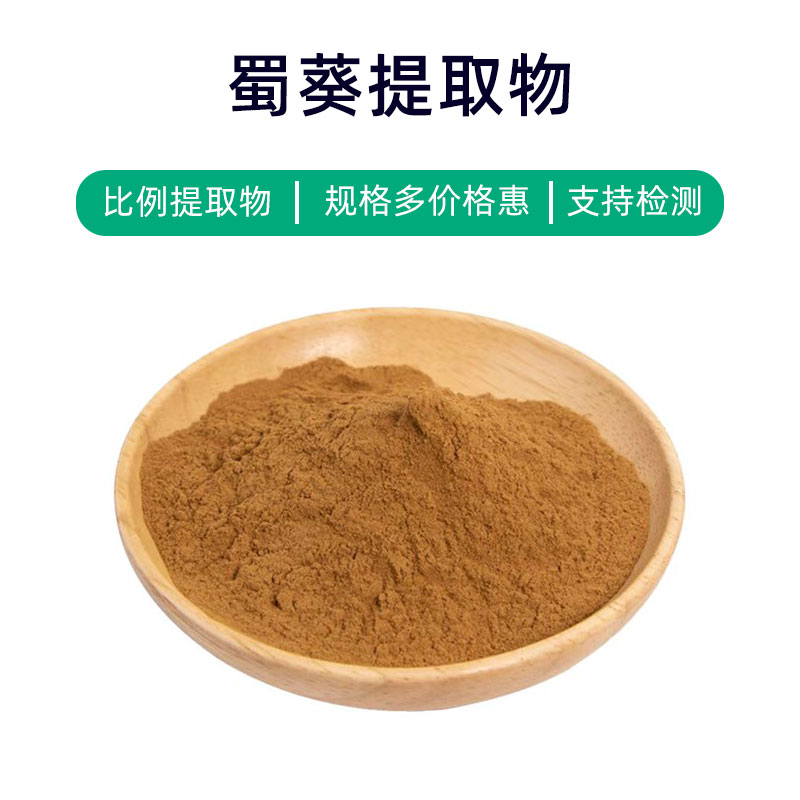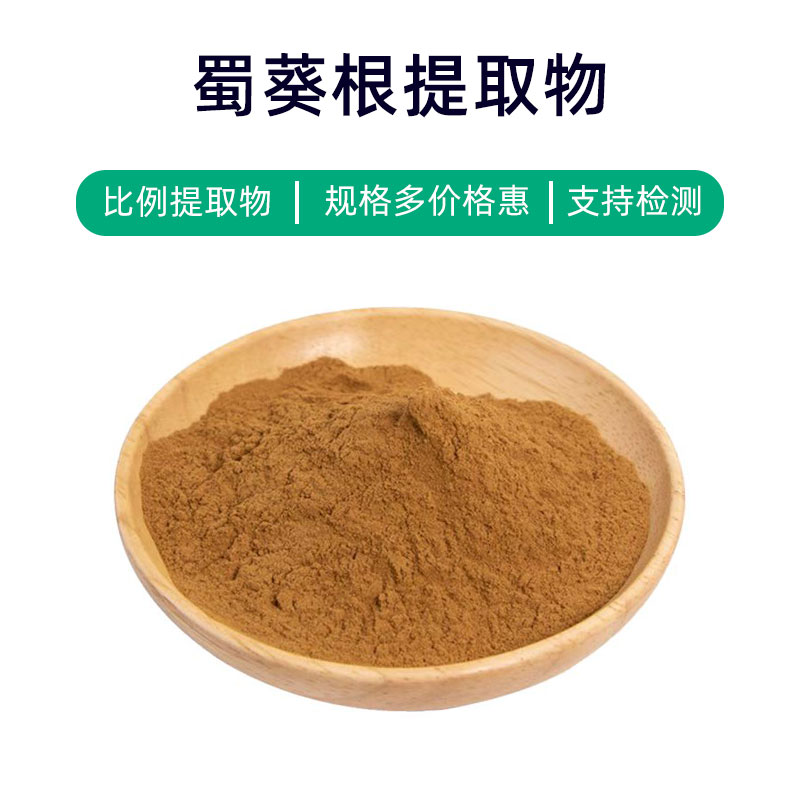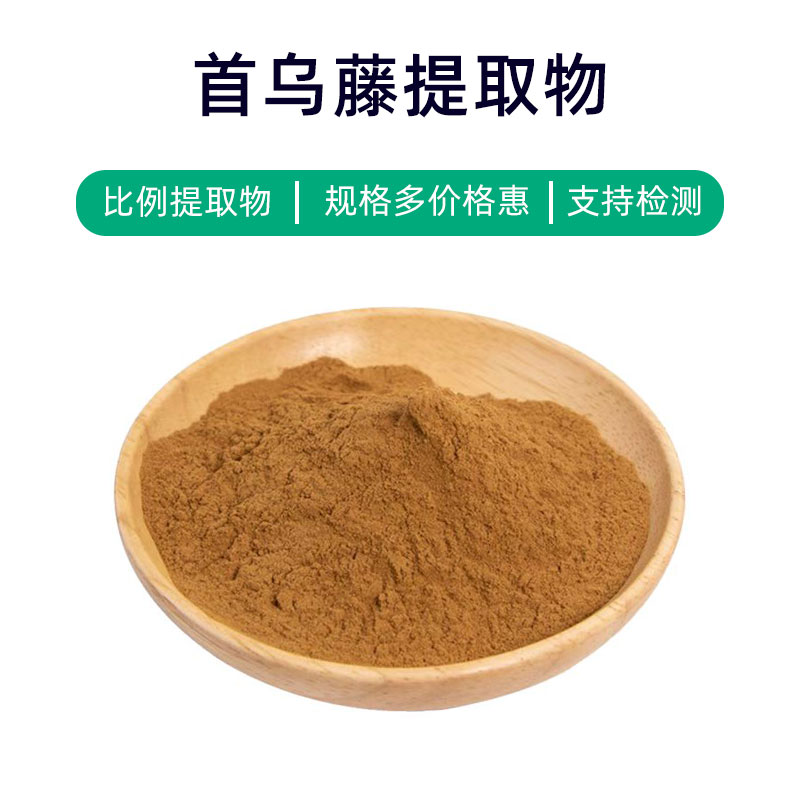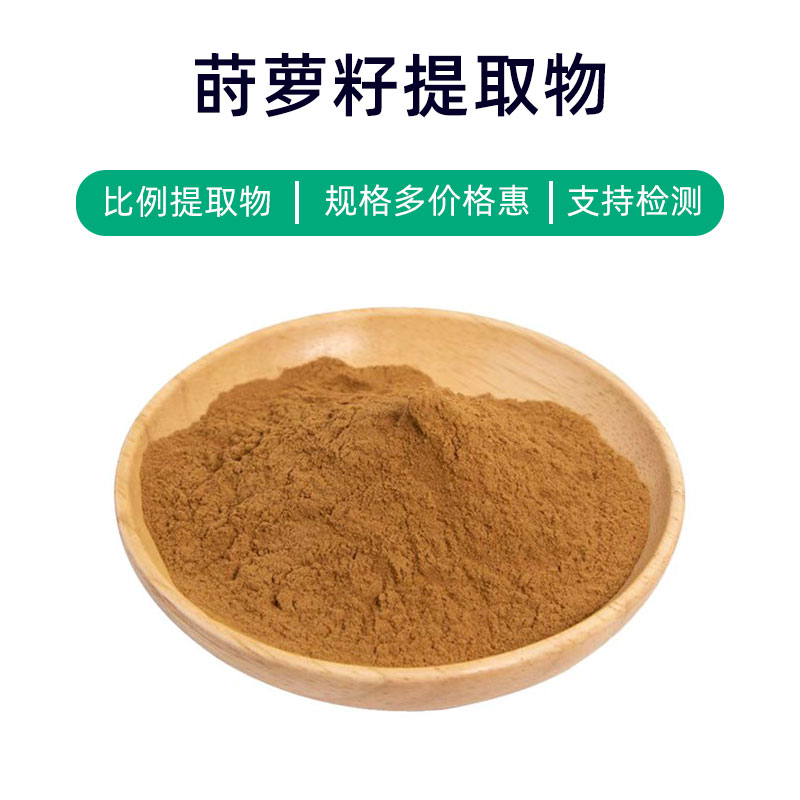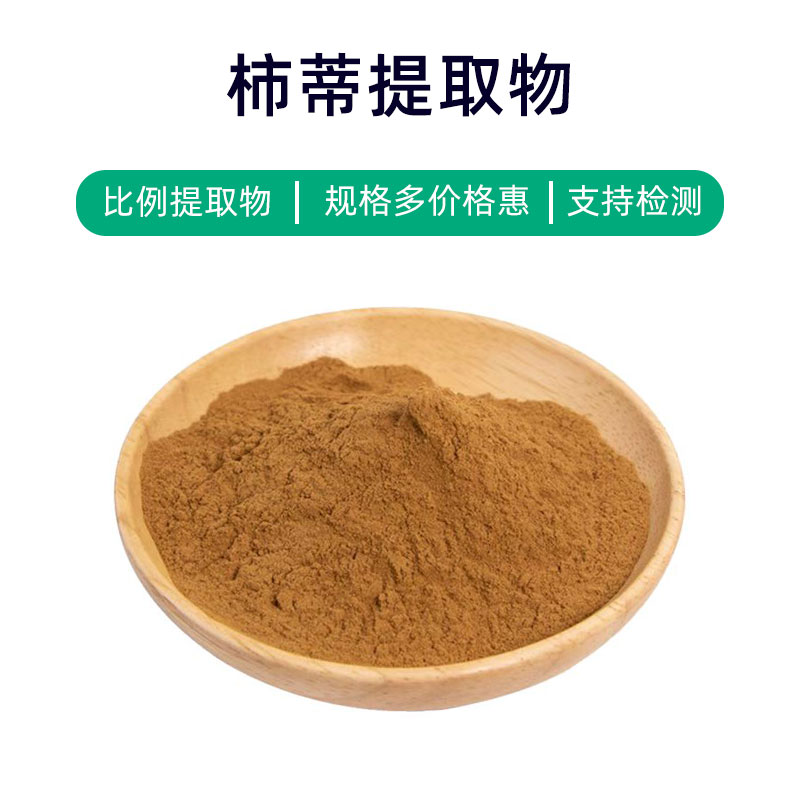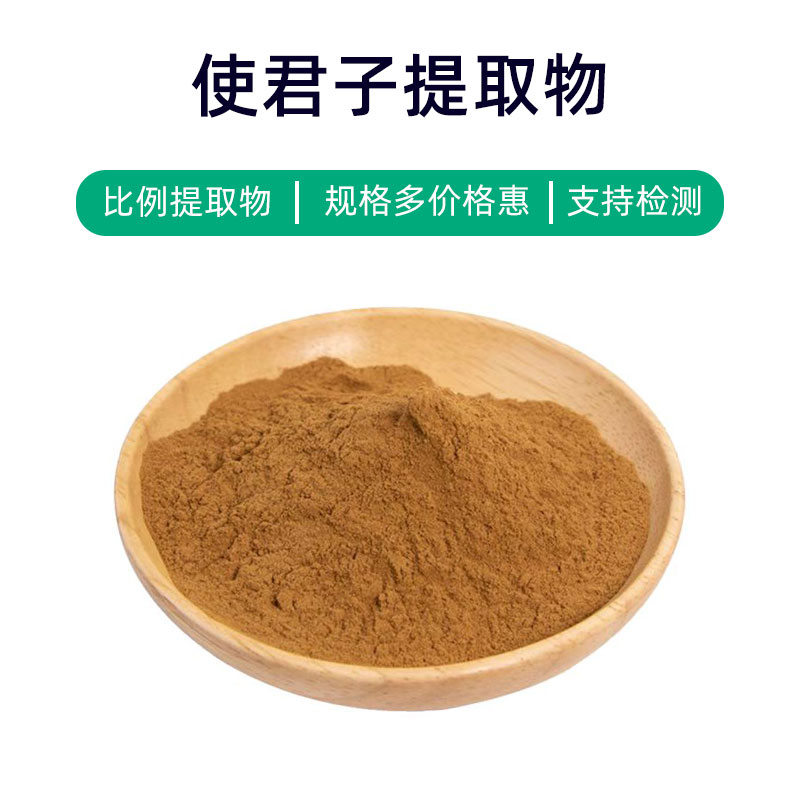Introduction to Sea Buckthorn Leaf Extract
Sea Buckthorn Leaf Extract is a natural plant extract derived from the leaves of the sea buckthorn plant, and it is rich in active ingredients such as Vitamin C, Vitamin E, beta-carotene, and chlorophyll. Its benefits are primarily seen in skincare and health. Firstly, Sea Buckthorn Leaf Extract has outstanding antioxidant properties; it can neutralize free radicals, delay skin aging, and reduce wrinkles and dark spots caused by oxidation. Secondly, it exhibits anti-inflammatory and soothing properties, helping to relieve skin inflammation and sensitivity, providing comfort to the skin. Additionally, Sea Buckthorn Leaf Extract is widely used to promote wound healing and speed up skin repair and regeneration. In cosmetics, it is often found in skincare products, masks, and lotions to improve skin texture, brighten skin tone, and enhance skin elasticity. In the health supplement sector, it is usually made into oral liquids or capsules to boost immunity and regulate internal oxidative balance. Overall, Sea Buckthorn Leaf Extract, with its rich nutritional components and multiple benefits, has become a favored ingredient in skincare and health supplements.
Production Process for Sea Buckthorn Leaf Extract
The production process of Sea Buckthorn Leaf Extract includes several key steps:
- Raw Material Preparation: Select fresh, clean sea buckthorn leaves as raw materials. Wash and remove impurities immediately after picking to ensure quality.
- Crushing: Crush the cleaned sea buckthorn leaves to better release active components, which can be achieved through mechanical crushing or cutting.
- Solvent Extraction: Soak the crushed sea buckthorn leaves in a suitable solvent (such as ethanol or water). During the extraction process, the solvent dissolves the active ingredients from the leaves, forming an extract.
- Concentration and Evaporation: Concentrate the extract by evaporating off the solvent's water content, which increases the concentration of active components in the extract.
- Filtration and Purification: Filter the concentrated extract to remove solid particles and impurities, resulting in a pure extract.
- Concentrated Extract: Further concentrate the filtered extract to enhance the concentration of active ingredients, yielding concentrated Sea Buckthorn Leaf Extract.
- Drying Final Product: Dry the concentrated extract to remove any remaining moisture, producing the final Sea Buckthorn Leaf Extract product.
- Packaging and Storage: Package and store the dried Sea Buckthorn Leaf Extract. It’s typically sealed to prevent moisture or oxidation, stored in a cool, dry place, away from direct sunlight.
These steps outline the typical production process of Sea Buckthorn Leaf Extract, where each step must be strictly controlled to ensure the final product's quality and safety.
Benefits and Side Effects of Sea Buckthorn Leaf Extract
As a natural plant extract, Sea Buckthorn Leaf Extract has been widely used in traditional Chinese medicine and is gaining attention in modern medicine and health supplements. Here are the main benefits and effects of Sea Buckthorn Leaf Extract:
- Antioxidant Properties: Sea Buckthorn Leaf Extract is rich in various bioactive components such as Vitamin C, Vitamin E, and anthocyanins, providing powerful antioxidant effects that can eliminate free radicals, delay cellular aging, and protect cell membranes from oxidative damage.
- Immune Regulation: Studies show that Sea Buckthorn Leaf Extract contains abundant bioactive polysaccharides and various vitamins, contributing to immune function regulation, enhancing immunity, and preventing infections and inflammation.
- Lipid-Lowering Effects: The bioactive components in Sea Buckthorn Leaf Extract can lower lipids and cholesterol, regulating lipid metabolism and decreasing blood lipid levels, helping to prevent cardiovascular diseases.
- Anti-Inflammatory Effects: Some active components of Sea Buckthorn Leaf Extract exhibit anti-inflammatory properties, inhibiting the release of inflammatory mediators and alleviating inflammatory responses, providing relief for conditions such as rheumatoid arthritis and gastroenteritis.
- Digestive Promotion: Sea Buckthorn Leaf Extract is rich in dietary fiber and tannins, which can promote gastrointestinal motility, increase gastrointestinal secretions, improve digestive function, and relieve gastrointestinal discomfort.
- Liver Protection: The bioactive components in Sea Buckthorn Leaf Extract help protect the liver, reducing its burden and promoting liver cell regeneration, providing auxiliary treatment for liver diseases such as hepatitis and fatty liver.
- Beauty and Skin Health: Rich in vitamins and bioactive components, Sea Buckthorn Leaf Extract has antioxidant and anti-aging benefits, improving skin texture, reducing wrinkles, enhancing skin elasticity, and promoting skin health.
Despite its numerous benefits, it is important to consider individual differences and the principle of moderation to avoid adverse reactions. Pregnant women, children, the elderly, and those with specific medical conditions should use it under medical guidance.
Applications and Dosage of Sea Buckthorn Leaf Extract
Sea Buckthorn Leaf Extract has a wide range of applications in medicine, food, and cosmetics. Here are the primary applications and dosage recommendations:
- Medical Applications:
- Health Supplements: Sea Buckthorn Leaf Extract is commonly used in health supplements as a source of vitamins, antioxidants, and immune modulators. It’s generally recommended for adults to take 100-200 mg daily, in divided doses, with adjustments based on individual circumstances and medical advice.
- Traditional Chinese Medicine Formulations: In traditional Chinese medicine, Sea Buckthorn Leaf Extract is often used for digestive system diseases and hepatitis treatment. It can be prepared as a decoction or combined with other herbal ingredients, with specific dosages determined by a doctor.
- Food Applications:
- Health Foods: Sea Buckthorn Leaf Extract can be added to health teas, beverages, and other health foods with immune-enhancing and digestive-promoting effects. Usually, one cup daily is recommended, with adjustments based on individual needs.
- Functional Foods: It can also be incorporated into functional foods, such as oral liquids or capsules, for improving blood lipids and regulating blood sugar.
- Cosmetics Applications:
- Skincare Products: Sea Buckthorn Leaf Extract is rich in vitamins and antioxidants, commonly added to skincare products for their antioxidant, moisturizing, and anti-aging effects. It is recommended for use 1-2 times daily.
- Hair Care Products: It is often found in shampoos and conditioners, helping to improve hair texture and nourish the scalp.
- Dosage Considerations:
- For medical and health supplement applications, it’s advisable to follow the recommendations of a physician or professional, adjusting according to individual conditions and disease status.
- In foods and cosmetics, usage should adhere to the recommended dosages on product labels to avoid excessive use.
- Pregnant women, children, the elderly, and those with specific conditions should consult a doctor or professionals before use to determine safe dosages.
Overall, Sea Buckthorn Leaf Extract is a valuable natural plant extract with significant applications in medicine, food, and cosmetics. It is essential to pay attention to dosage, frequency, and appropriate user demographics to safely and effectively harness its benefits.
Introduction to the Source Plant of Sea Buckthorn Leaf Extract, Distribution, and Growth Environment
Sea Buckthorn Leaf Extract comes from the sea buckthorn plant, which is a common medicinal plant with rich nutritional value and medicinal effects. Below is detailed information about the sea buckthorn plant’s introduction, distribution, and growth environment:
- Plant Introduction:
- Scientific Name: The sea buckthorn plant belongs to the Elaeagnaceae family, mainly including the genus Hippophae and the genus Elaeagnus.
- Morphological Characteristics: Sea buckthorn plants are perennial shrubs or small trees, typically 2-6 meters tall, with gray-brown bark and thorny branches. The leaves are oval or elongated, leathery, and covered with silvery-gray scales on both sides.
- Flowers and Fruits: The plant produces small yellow flowers, usually blooming in spring, which are fragrant; the fruits are oval or oblong, with an orange-yellow skin, juicy flesh, and a sweet-tart taste.
- Distribution:
- Sea buckthorn plants are widely distributed across the globe, primarily thriving in temperate and subtropical regions.
- In China, they are found in various regions, notably in the Tibetan Plateau, northwest, southwest, and northeast areas, growing on slopes, in deserts, riverbanks, and rocky habitats.
- Growth Environment:
- Soil Requirements: Sea buckthorn plants are highly adaptable to soil and prefer to grow in loose, well-drained, fertile sandy or gravelly soils.
- Light Conditions: They thrive in full sunlight and better develop in well-lit environments.
- Climate Requirements: Sea buckthorn plants are sturdy against cold, drought, and saline-alkaline conditions, but are less tolerant of high heat and humidity.
Due to their ability to survive and grow in harsh environments, sea buckthorn plants have become essential vegetation in arid and high-altitude regions. Their fruits are rich in Vitamin C, Vitamin E, beta-carotene, and other nutrients, making them widely used in medicine, food, and health supplements.
Processing and Storage of Sea Buckthorn Leaf Extract
The processing of Sea Buckthorn Leaf Extract generally includes the following steps: First, mature sea buckthorn leaves are harvested, then washed and cleaned. Next, an extraction process is employed, with common methods including water extraction, alcohol extraction, and supercritical fluid extraction. After extraction, steps such as filtration, concentration, and drying are undertaken to yield the final Sea Buckthorn Leaf Extract. For storage, it should typically be kept in a cool, dry, and ventilated area, away from direct sunlight and high temperatures, and sealed to prevent moisture from affecting its quality. Generally, it can have a long shelf life under proper conditions.
Monica Sun is a seasoned expert in the plant extraction industry with over a decade of experience in research and production. She specializes in the extraction and purification of plant active ingredients, focusing on driving innovation in natural product applications. Monica has participated in the development of multiple functional plant extracts, delivering high-value natural raw material solutions for the health food, pharmaceutical, and dietary supplement sectors.









